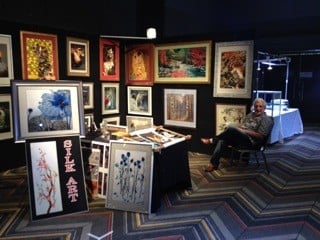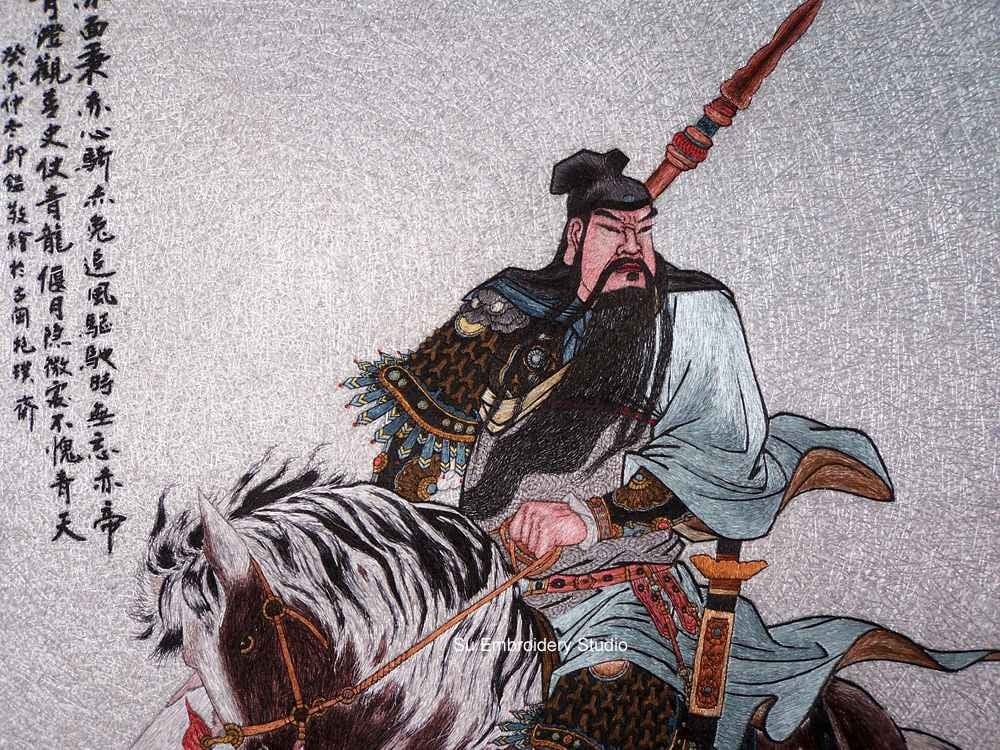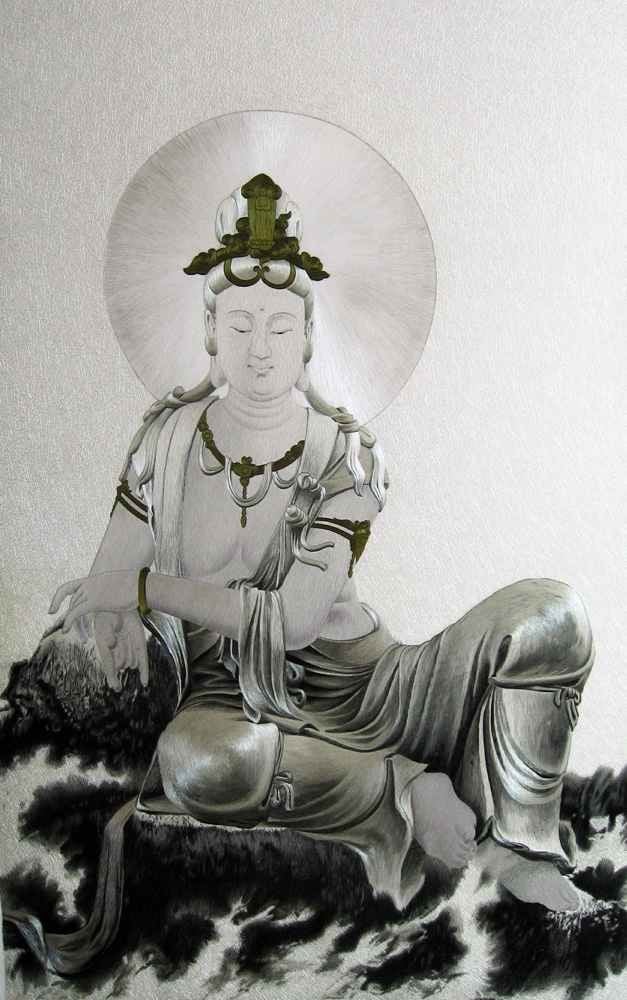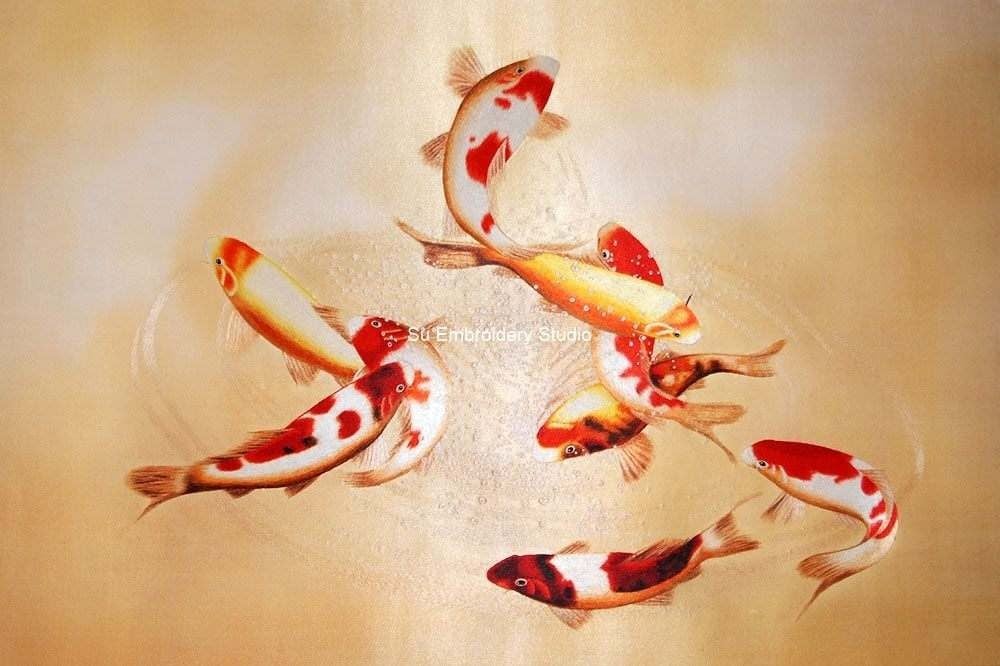Lang Shining, also known as Giuseppe Castiglione, was an Italian Jesuit missionary who became a court painter in China during the Qing Dynasty. Born in Milan, Italy, in 1688, Lang Shining arrived in China in 1715. He quickly gained fame for his artistic talents, particularly in Western-style painting and oil painting techniques, which he skillfully combined with traditional Chinese painting styles.
His works often depicted subjects from both European and Chinese cultures, including portraits of Chinese emperors, court officials, and historical events. Lang Shining's paintings are renowned for their intricate details, vibrant colors, and the seamless blending of Eastern and Western artistic techniques.
Lang Shining's contributions to Chinese art and culture were significant, as he played a key role in introducing Western artistic styles and techniques to the Qing court. He was highly respected by Chinese emperors and court officials, and his influence had a lasting impact on the development of Chinese painting during the Qing Dynasty.
In the 54th year of Emperor Kangxi's reign (1715), Lang Shining entered the Ruyi Pavilion, where he spent 51 years, becoming a court painter greatly admired by the Qing emperors. During this time, he diligently honed his craft, devoting himself to painting from 7 o'clock in the morning until five in the afternoon. In addition to his painting duties, Lang Shining also taught Western painting techniques at the Qing court, created murals, and conducted research on the production techniques of enamelware. His life was dedicated to art and cultural exchange, leaving little time for leisure.
The first painting recorded in the Qing Dynasty archives by Lang Shining is "Assembled Auspiciousness" which he presented to celebrate Emperor Yongzheng's ascension to the throne. The painting depicts a celadon string-patterned vase with intertwined lotus flowers and rice ears. The double-eared rice in the vase symbolizes a bountiful harvest and auspiciousness, while the lotus flower symbolizes the emperor's virtue and integrity. It was these hidden "clever tricks" within the painting that greatly impressed Emperor Yongzheng and affirmed Lang Shining's painting talent.
- Chinese Silk Embroidery 'Assembled Auspiciousness'
- Chinese Silk Embroidery 'Auspicious Signs of the Dragon Boat Festival'
1. Inspired by Lang Shining's renowned painting, Su Embroidery Studio created this embroidery masterpiece which captures the essence of the original artwork with remarkable precision and detail.
Assembled Auspiciousness, Hand Embroidered with Silk Threads
At the heart of the silk embroidery lies a celadon vase, meticulously hand embroidered to replicate the intricate string-patterned design. Within the vase, intertwined lotus flowers and double-eared rice ears come to life through delicate stitching in dense plain stitches, each petal and grain expertly rendered to evoke a sense of natural beauty and grace.
Intricately Hand Embroidered Vase
The symbolism inherent in the painting is faithfully preserved in the silk embroidery. The double-eared rice symbolizes abundance and prosperity, while the lotus flowers embody purity and virtue, echoing the sentiments of auspiciousness and goodwill that characterized the Qing Dynasty era.
Lotus Flowers and Rice Ears so Finely Hand Embroidered
What sets this silk embroidery apart is its ability to convey the subtle nuances and hidden meanings embedded within the original painting. Just as Lang Shining ingeniously incorporated "clever tricks" into his artwork to impress Emperor Yongzheng, the skilled embroidery artists at Su Embroidery Studio have masterfully translated these elements into stitches, creating a work of silk art that both honors tradition and captivates the imagination.
2. Another Chinese silk embroidery we introduce today, titled "Auspicious Signs of the Dragon Boat Festival" is a masterful rendition inspired by Lang Shining's celebrated painting of the same name. Resembling European still life oil paintings, this Chinese silk embroidery captures the essence of the original artwork while infusing it with the meticulous artistry of Su Embroidery Studio.
Auspicious Signs of the Dragon Boat Festival, Hand Embroidered with Silk Threads
At the center of the silk embroidery lies a celadon vase, meticulously hand embroidered to replicate the intricate details of its design. Within the vase, papyrus leaves, pomegranate flowers, and hibiscus come to life through delicate embroidery, each element meticulously rendered to evoke a sense of natural beauty and abundance.
Short Plain Stitches Used in the Celadon Vase
The tray below is adorned with plums and cherries, with several zongzi (glutinous rice wrapped in reed leaves) scattered nearby, symbolizing the traditional Chinese festival of the Dragon Boat Festival. These elements pay homage to the rich cultural heritage of China, spanning over two thousand years, and reflect Lang Shining's innovative fusion of Western and Eastern artistic styles.
Silk Embroidery Work in Rice Dumplings Wrapped in Reed Leaves so Dense and Smooth that They Look Real
In this silk embroidery, Lang Shining's exploration of still life techniques is evident, influenced by European oil painting yet rooted in the customs and traditions of Chinese culture. The seamless integration of Western watercolor painting with traditional Chinese meticulous brushwork and ink techniques results in a harmonious fusion of artistic expression.
Various Leaves and Flowers All Hand Embroidered with Precision
The hand embroidery technique employed in this silk embroidery artwork is truly remarkable, showcasing the vibrant colors and lifelike textures of flowers, leaves, fruits, and porcelain vases. The use of the "highlights" technique, a hallmark of European paintings, adds depth and dimension to the composition, inviting viewers to marvel at the exquisite craftsmanship and skillful execution of the silk embroidery.
Lang Shining's contributions to Chinese art and culture were significant, as he played a key role in introducing Western artistic styles and techniques to the Qing court. His innovative fusion of Western and Eastern artistic traditions paved the way for the development of Chinese painting during the Qing Dynasty, leaving behind a legacy of artistic excellence and cultural exchange.
Today, Lang Shining's paintings continue to inspire admiration and study in both China and the Western world. Through the artistry of Su Embroidery Studio, his iconic works are immortalized in silk embroideries, preserving their beauty and cultural significance for future generations to appreciate and enjoy.
With meticulous attention to detail and a deep understanding of Lang Shining's artistic vision, Su Embroidery Studio brings these masterpieces to life in silk threads, capturing the essence of his paintings and honoring his legacy as one of the most influential artists of his time. Through the medium of silk embroidery, Lang Shining's paintings transcend time and culture, bridging the gap between East and West and celebrating the enduring beauty of cross-cultural artistic exchange.
by Su Embroidery Studio (SES), Suzhou China
SES is dedicated to Chinese Silk Embroidery Art and High-End Custom Embroidery
Find SES's embroidery work at Chinese Silk Embroidery for Sale.












